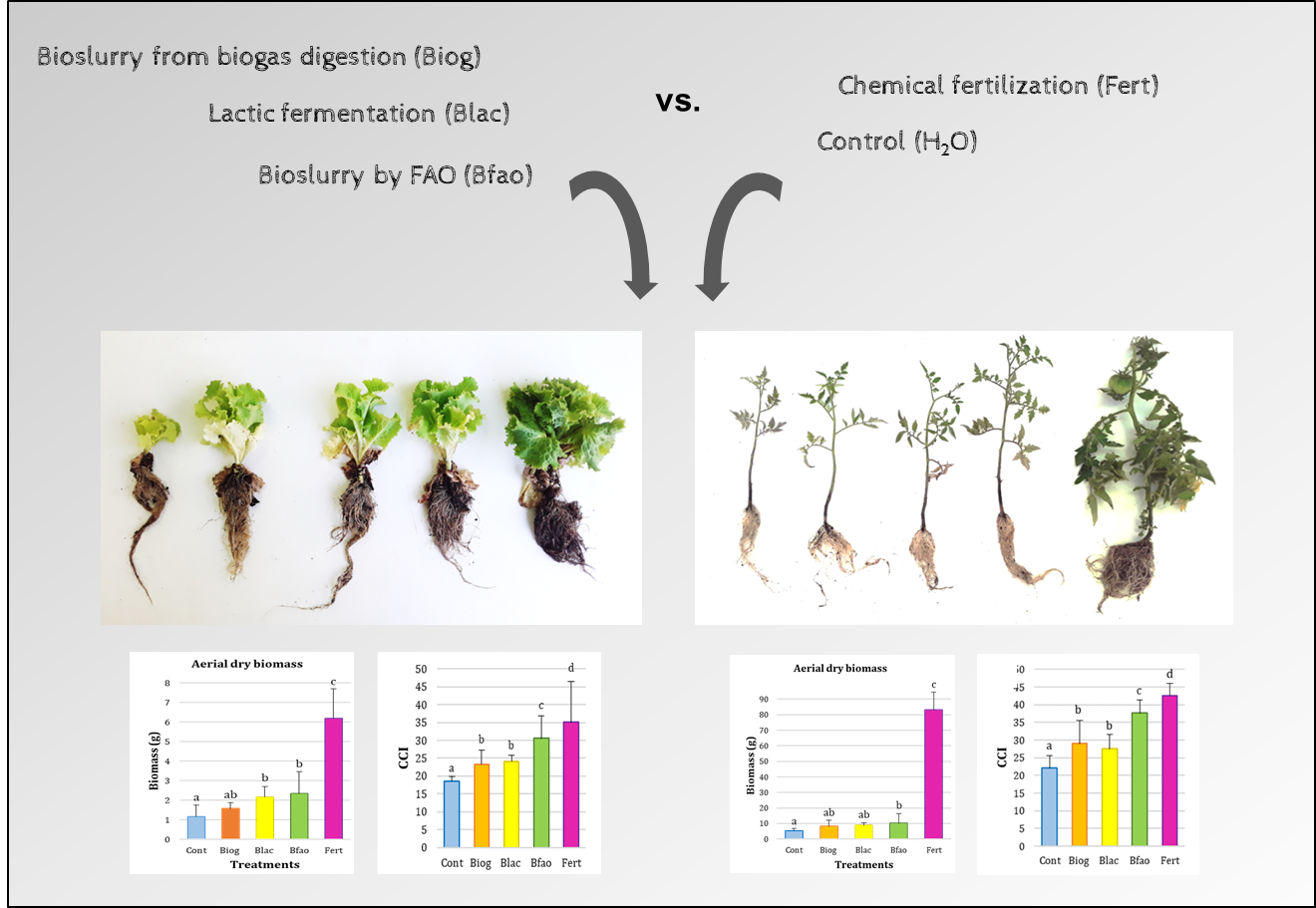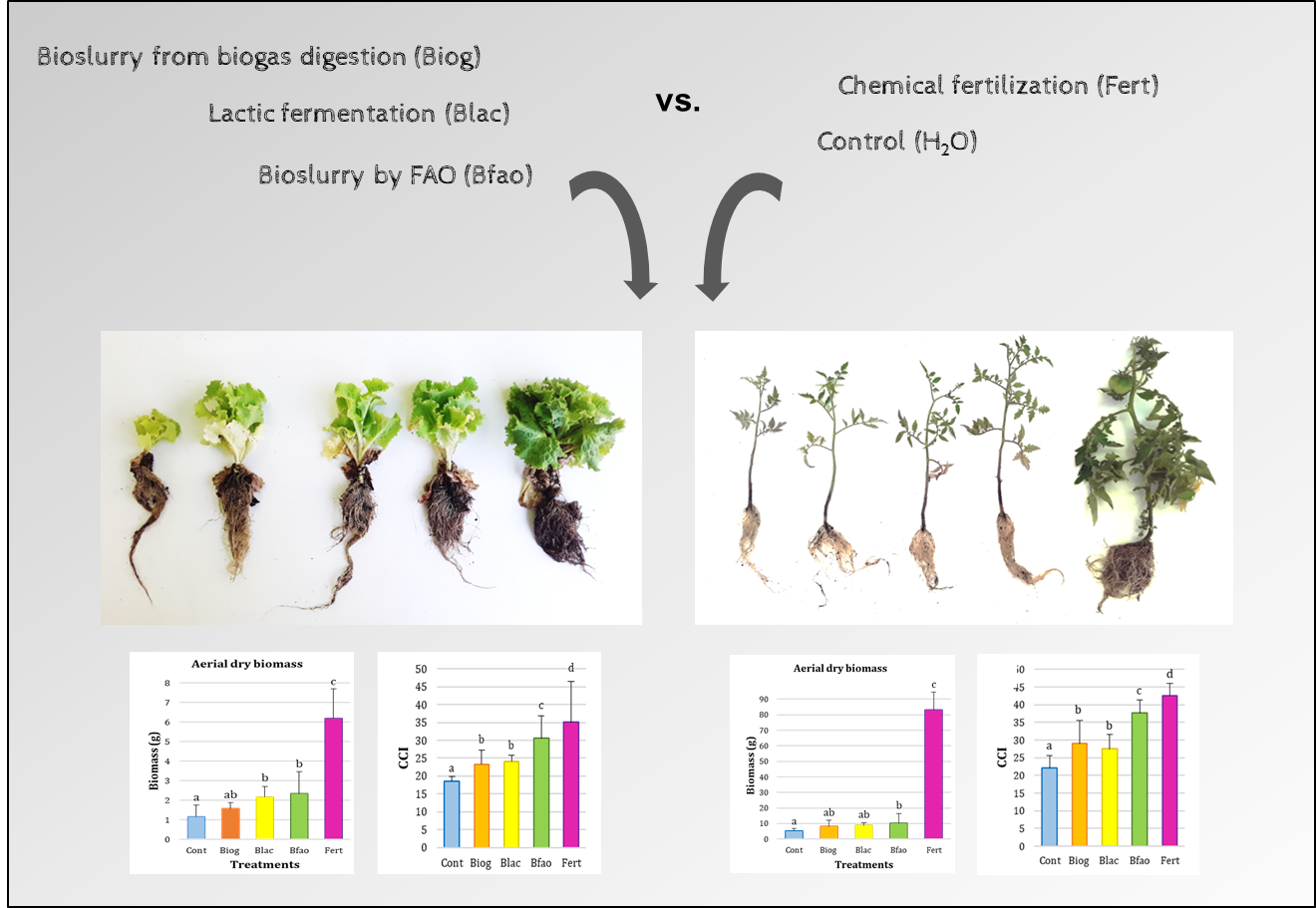Effect of bioslurries on tomato Solanum lycopersicum L and lettuce Lactuca sativa development
DOI:
https://doi.org/10.48162/rev.39.082Keywords:
anaerobic digestion, agroecology, organic production, plant nutrition, Lycopersicum esculentumAbstract

Bioslurries, obtained by anaerobic digestion of fresh organic matter, are emerging as a cheaper and low-impact alternative for synthetic products in agriculture. The aim of this study was to evaluate bioslurry obtained from biogas digestion (Biog), bioslurry for plant nutrition by FAO (Bfao), and lactic fermentation (Blac) as biostimulant in tomato and lettuce plants. Based on a toxicity test, a 10% dilution was finally applied to the plants. In lettuce, Bfao and Blac significantly increased aerial biomass (2.17 ±0.54 and 2.33 ±1.13 g respectively), regarding water control (1.16 ±0.60 g), while root biomass was only increased by Bfao (1.60 ±0.44 g) compared to control (0.66 ±0.34 g). All digestates increased chlorophyll content index (CCI), while yield (Fv/Fm) and performance index (Plabs) did not show differences with water control. In tomato, only aerial biomass was significantly increased by Bfao. All digestates significantly increased CCI, while Fv/Fm was only significantly higher in Bfao and Blac, related to water control. PIabs showed no differences. In both plant species, commercial fertilizer showed significantly higher values for all parameters. In conclusion, all digestates stimulated plant growth, Bfao showed the highest effect on tomatoes and lettuce biomass followed by Blac and Biog, being a cheaper, safer and lower-impact alternative for traditional products for crop growing.
Highlights
- Digestates are valuable by-products, with different characteristics and effects on plant biomass, suggesting complex interactions.
- All digestates stimulated tomatoes and lettuce growth.
- The digestate designed by FAO showed the highest effect on plant biomass, constituting an adequate alternative for a cheaper, safer and low-impact strategy for crop growth.
Downloads

Downloads
Published
How to Cite
Issue
Section
License
Copyright (c) 2018 Revista de la Facultad de Ciencias Agrarias UNCuyo

This work is licensed under a Creative Commons Attribution-NonCommercial-ShareAlike 3.0 Unported License.
Aquellos autores/as que tengan publicaciones con esta revista, aceptan las Políticas Editoriales.










.jpg)




